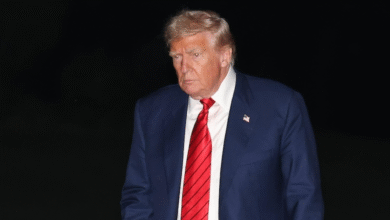Tesla Executive Shakeup: Omead Afshar Fired by Elon Musk

In a surprising twist, the recent Tesla executive shakeup has sent ripples through the automotive industry, ignited by CEO Elon Musk’s decision to fire Omead Afshar, the vice president of manufacturing and operations. This leadership change comes amid troubling reports of a decline in Tesla sales, particularly in key markets, where competition is heating up. According to various sources, Afshar’s departure was prompted by year-over-year sales decreases, prompting a reevaluation of the Tesla management team. Notably, this shakeup forms part of a broader narrative involving Musk’s controversial public persona and its impact on Tesla’s brand reputation. As the company grapples with these challenges, the automotive world watches closely for updates on this unfolding story and other Elon Musk news that may shape Tesla’s future direction.
The recent restructuring at Tesla marks a significant leadership turnover within the company, drawing attention to the ongoing challenges facing the electric vehicle giant. The dismissal of top executives, including Omead Afshar, highlights a critical period of change as Tesla seeks to address its declining sales figures in an increasingly competitive market. This management revamp comes on the heels of broader industry shifts and changing consumer preferences that threaten Tesla’s dominance. As the electric vehicle sector evolves, the repercussions of these executive changes may resonate far beyond the company itself, affecting investor confidence and the public’s perception of the brand. As observers analyze these developments, the focus remains keenly on how Tesla will navigate this tumultuous landscape and reaffirm its position in the fast-paced automotive sector.
Tesla Executive Shakeup: The Impact of Omead Afshar’s Firing
In a significant shift within Tesla’s management team, CEO Elon Musk has fired Omead Afshar, the vice president of manufacturing and operations. This decision is indicative of broader challenges the company faces, particularly as it navigates a troubling decline in car sales across key markets. As more customers turn to rival brands, including those from Europe and competitive offerings from China, the pressure has mounted on Tesla’s leadership to reassess its strategic direction. Afshar, who reported directly to Musk, was responsible for overseeing a substantial team focused on operations, highlighting the gravity of this leadership change within the company.
The implications of this shakeup go beyond just the immediate leadership change. Investigations into Afshar’s previous activities, including a focus on hard-to-source materials and the interplay with SpaceX, raised questions about operational integrity. The scrutiny he faced has likely contributed to Tesla’s ongoing challenges. In the wake of Afshar’s departure, it remains crucial for Tesla to enhance its management team to restore confidence among investors and consumers alike, especially as the company grapples with fluctuating stock prices and brand reputation.
Declining Tesla Sales: A Catalyst for Leadership Changes
The recent firing of Omead Afshar can be linked directly to the decline in Tesla’s sales, as the automaker has reported consistent decreases in car sales year-over-year. As electric vehicle enthusiasts continue to explore options, Tesla’s market share is inching downwards, raising alarm bells regarding its strategic direction. This realignment in leadership, particularly within its manufacturing and operations team, signals an urgent need for a renewed focus on production efficacy and product appeal in a competitive landscape.
Moreover, the resignation of other key executives, such as Milan Kovac from the Optimus humanoid Robotics program, points to possible instability within the upper echelons of Tesla’s management. Collectively, these changes reflect an organizational need to adapt in the face of shifting consumer preferences and emerging market threats. As Tesla seeks to revive its sales momentum, its management team will need to exhibit agility in addressing operational inefficiencies while maintaining a robust product development pipeline.
Elon Musk’s recent public engagements and policy endorsements have also introduced complexities that may adversely affect customer perception. The need for Tesla’s leadership to engage with consumers and stakeholders effectively cannot be overstated, especially during a period where the company’s brand reputation is on a fragile footing.
In conclusion, Tesla’s management must undergo significant re-evaluation and possibly a restructuring to stabilize sales and ensure stakeholder confidence. Keeping close tabs on market trends and consumer sentiment will be critical for the success of any new initiatives or changes in operational strategy.
Elon Musk’s Strategic Decisions: A History of Leadership Changes
Elon Musk’s decision-making is often characterized by rapid and sometimes controversial leadership changes, reflecting his hands-on approach to management. The termination of Omead Afshar adds to a history of executive turnover that has made headlines in the wake of shifting market dynamics and competitive challenges. Previous ousters and reshuffles within Tesla’s management team demonstrate Musk’s tendency to not hesitate when something is amiss, but they also highlight the potential risks of instability in key roles.
As Tesla faces growing pressure from decreased sales and increasing competition, consolidating leadership strategies that align with Musk’s visionary goals is essential. It’s not merely about filling positions but strategically aligning talents with the company’s objectives. Musk’s influence in the company’s leadership will undoubtedly play a pivotal role in navigating the tumultuous waters ahead, particularly as it contends with global market pressures and changing consumer preferences.
The Future of Tesla’s Leadership and Corporate Strategy
With the recent shakeup in Tesla’s executive ranks, questions loom about the automaker’s immediate future and its overall corporate strategy. The firing of Omead Afshar signals more than a simple change; it marks a pivotal moment of reflection for Tesla as it reconsiders how to drive innovation and efficiency within its manufacturing processes. The company may now need to prioritize building a robust management team capable of addressing both current challenges and future opportunities in the rapidly evolving electric vehicle landscape.
The leadership changes could usher in a new era of corporate strategy that balances Musk’s ambitious aspirations with a practical approach to addressing the immediate challenges of sales decline and reputational issues. Investors and stakeholders alike are keenly interested in how Tesla will steer its course, and enhancing the leadership framework could be crucial for regaining market confidence. Ultimately, as Tesla strives to reclaim its position at the forefront of the EV market, the importance of strategic leadership cannot be understated.
Understanding Tesla’s Brand Reputation Challenges
Tesla has faced considerable brand reputation challenges recently, in part due to Musk’s high-profile political engagements and controversial statements that have polarized consumer sentiment. The decision to fire Omead Afshar is not only a reflection of operational issues but also a necessary step to mitigate any further reputational damage. As the company addresses its declining sales performance in critical markets, overcoming brand perception hurdles has become increasingly paramount.
Musk’s endorsements of political figures and movements have raised significant questions among consumers, potentially leading many to rethink their preferences when it comes to purchasing electric vehicles. Identifying a new direction for Tesla’s branding strategy is essential, especially as consumers are increasingly swayed by corporate values that align more closely with their own beliefs. Moving forward, it will be imperative for Tesla to not only bolster its operational efficiency but also rejuvenate its brand reputation to maintain a loyal customer base.
The Role of the Management Team in Tesla’s Future
As Tesla navigates the evolving landscape of the automotive industry, the role of its management team is more critical than ever. With the firing of Omead Afshar, the emphasis now shifts to how the new executive appointments will influence the company’s strategic direction and operational effectiveness. An insightful and adaptable management team can better handle the external pressures that Tesla faces, from competitors to regulatory changes.
Going forward, the new leadership must prioritize not only operational success but also team cohesion and clear communication. They will need to work collaboratively to forge a path that not only addresses immediate operational challenges but also prepares Tesla for long-term sustainability and growth. In this context, establishing a clear vision and promoting accountability across all levels will be crucial for revitalizing Tesla’s competitive edge in the electric vehicle space.
Market Competitiveness and Tesla’s Response
In recent months, Tesla has encountered heightened competition in the electric vehicle market, which has prompted its management to respond swiftly to shifting dynamics. With new entries from European and Chinese manufacturers offering attractive alternatives, the urgency to innovate becomes paramount. The recent firing of Afshar may well signal an intention to revamp strategies that elevate Tesla’s competitive stance amid more aggressive market rivals.
In addition, Tesla’s declining sales figures reflect the necessity for rigorous market analysis and a restructured approach to product development and marketing strategies. Ensuring Tesla remains a sought-after brand will involve addressing consumer desires for affordability and higher value, particularly in response to emerging alternatives. A strategic management team can play a pivotal role in implementing these essential adjustments to successfully navigate future challenges.
Investor Confidence and Future Prospects for Tesla
As Tesla faces leadership changes, the outlook for its investors remains a crucial consideration. The firing of Omead Afshar has sparked discussions about the company’s future direction and how these alterations might influence stock performance. With Tesla’s share values already experiencing a decline, restoring investor confidence is essential. It is imperative that the new management team communicates a compelling vision that showcases their commitment to growth despite the tumultuous environment.
Providing transparency regarding operational improvements and strategic initiatives will be vital in regaining market trust. Investors are undoubtedly watching how Tesla’s management adjusts to the competitive landscape and whether it can leverage its innovative capabilities to attract and retain customers. By establishing strategic initiatives that reflect market demands and consumer insights, Tesla can aim to rejuvenate its investor image while navigating the current landscape.
Navigating Challenges: Tesla’s Path Ahead
With many challenges looming for Tesla, navigating the road ahead will require careful planning and execution by its newly structured leadership team. The need for innovation, efficiency, and responsiveness cannot be overstated, particularly as Afshar’s dismissal underscores the urgency for change. This transitional phase presents an opportunity for fresh ideas and approaches to drive Tesla forward, especially in areas where it has previously seen declines in performance.
The overarching goal must be to not only stabilize operations but also to reinvigorate the brand’s market presence. Crucial to this process will be assessing the competitive landscape and identifying strategic partnerships that can bolster Tesla’s offerings. Embracing a culture of adaptability and informed decision-making will aid Tesla in confronting obstacles while positioning the company for a brighter future.
Frequently Asked Questions
What does the Tesla executive shakeup mean for the company’s future?
The recent Tesla executive shakeup, particularly the firing of Omead Afshar, indicates a shift in leadership aimed at addressing challenges such as the company’s declining sales. With Afshar’s direct reports, including key figures like Troy Jones and Joe Ward, also involved, this transition might lead to a strategic reevaluation of Tesla’s operations and sales efforts.
How does the firing of Omead Afshar relate to Tesla’s sales decline?
Omead Afshar was fired amidst reports of a notable Tesla sales decline in key markets. His role as vice president of manufacturing and operations placed him at the center of production and sales strategies, which may have contributed to Tesla’s recent challenges in maintaining market share.
What can we expect from Tesla’s leadership change following the executive shakeup?
Following the Tesla leadership change due to the recent executive shakeup, it is expected that new management will implement innovative strategies to combat declining sales. This could involve fresh approaches in manufacturing and marketing to strengthen Tesla’s competitive position against emerging electric vehicle alternatives.
How has Elon Musk’s involvement impacted the Tesla executive shakeup?
Elon Musk’s direct involvement in decisions surrounding the Tesla executive shakeup, especially the dismissal of Omead Afshar, highlights his active role in steering the company’s direction. His focus on addressing inefficiencies and boosting sales may drive significant organizational changes.
What has been the market reaction to the Tesla executive shakeup?
The market reaction to the Tesla executive shakeup, marked by the firing of key executives like Omead Afshar, has reflected investor concern, as evidenced by a 19% decline in Tesla’s stock price this year. The leadership changes may influence investor confidence and the company’s market position moving forward.
What was the reason for Omead Afshar’s dismissal amid the Tesla executive shakeup?
Omead Afshar was dismissed as part of the Tesla executive shakeup following his association with a year-over-year sales decline. Reports suggest that internal investigations and criticisms regarding his management may have prompted Elon Musk to take decisive action to realign the leadership.
| Key Point | Details |
|---|---|
| Firing of Omead Afshar | Tesla CEO Elon Musk has confirmed the firing of Omead Afshar, the vice president of manufacturing and operations. |
| Reason for Termination | Afshar’s exit follows year-over-year declines in car sales in Tesla’s key markets. |
| Team and Leadership Changes | Afshar led a team that included notable executives Troy Jones and Joe Ward. |
| Past Investigations | In 2022, Afshar was the subject of an internal investigation regarding orders for construction materials. |
| Company Performance | Tesla’s stock has dropped 19% this year; car sales in Europe have declined for five consecutive months. |
| Leadership Changes | Afshar’s termination follows the resignation of Milan Kovac from Tesla’s Optimus robotics program. |
Summary
The recent Tesla executive shakeup marks a significant shift within the company as CEO Elon Musk has terminated Omead Afshar amidst alarming declines in car sales across key markets. This move, which also follows the resignation of another key leader, Milan Kovac, underscores Tesla’s ongoing struggles and the impact of leadership changes on its operational strategy. As the company faces increased competition and a stock slump, it remains to be seen how these adjustments will affect Tesla’s direction moving forward.




